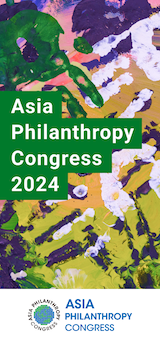What do Selena Gomez and Mackenzie Scott have in common? They’re both new additions to the global billionaire club.
I was recently surprised to learn about Selena Gomez joining the list of the richest people in the world. Though I’ve never been one for celebrity hero-worship, Gomez is someone I have a lot of respect for. I have fond memories of rushing home from school to watch her Disney Channel show The Wizards of Waverley Place as a teenager, and admired the public advocacy work she did around mental health and the autoimmune condition Lupus which she suffers from.
It turns out that as well as being an actress, singer and performer, she’s also a successful entrepreneur and philanthropist. At the age of 32, she’s amassed a fortune of $1.3 billion, which comes mainly from her Rare Beauty make-up company. With this, she set up the Rare Impact Fund that addresses youth mental health. Joining the ranks of her friend Taylor Swift, Gomez is the latest addition to a new generation of young, female billionaires that are shaking up the world’s rich lists, and consequentially philanthropy.
Shifts on the rich list
It’s a trend that’s been in progress for a while – coming to the fore in 2020, when Mackenzie Scott became the richest woman in the world with a net worth of over $66 billion following her divorce from Amazon founder Jeff Bezos. There is also Melinda French Gates’ high-profile divorce and exit from the Gates Foundation, as well as her subsequent philanthropic ventures, that have also caught media interest.
It’s clear that the demographics of wealth distribution in the world are shifting. In wealth circles, there’s often much chatter about money being passed down through generations – called the Great Wealth Transfer, trillions of dollars are expected to pass from Silent and Boomer generation members to their Gen X, Millennial, and Gen Z children. However, there’s also been a different sort of wealth consolidation as decades of progress in feminism have enabled more women to reach their full career potential. Forbes’ billionaire list has a useful set of filters, one of which is sorting by age. If you sort the list from youngest to oldest, you’ll find that a large proportion of the youngest and newest members of the list are female, and they’re rapidly climbing up the ranks. This is also backed up by research done by Julius Baer, which found that the percentage of global billionaires who are women grew from 9 percent to 13 percent between 2010 and 2023.
More women means more philanthropy, says the research
So, what does this mean for philanthropy? Only good things, says the data. Findings from the report titled ‘Do women give more?’ by the Lilly family school of philanthropy at IUPUI shows that ‘for the top 60 percent of income earners, women are more likely to give, and give more, to secular causes than their male counterparts.’
Other interesting findings from the report show that as women’s income increases, they are more likely to give to ‘education, environment and basic needs organisations.’ As Scott has demonstrated by her donations to women’s funds, this also includes resourcing the feminist movement, which is more important than ever in a political climate threatening women’s hard-won rights.
Issues such as reproductive justice in the US and gender-based violence are being brought to the fore by high-net-worth female donors, as well as international development projects which often benefit the lives of women and children living in impoverished conditions. With concern for the next generation, environmental and sustainability projects are also a key area of focus.
In my opinion, these shifting dynamics provide a necessary challenge to traditional philanthropy by elevating previously marginalised voices and making way for a more diverse, representative discussion around how and where funding should be distributed. Making up 51 percent of the global population, the power and potential women hold as consumers, change-makers, community members and funders is enormous.
Women’s unique experiences can no longer be sidelined in philanthropy. They’re already a vital yet underestimated part of the system, often bringing their communities together and playing active roles in grassroots movements to implement change with meagre resources. Now, they’re finally in a position to mobilise greater resources and wealth to deliver impact.
As the world’s rich lists continue to diversify, I see this as a trend that will only accelerate in the coming decades. Role models such as Mackenzie Scott will undoubtedly inspire new generations of female philanthropists, and the work that they’re doing to fund the feminist movement will continue to lower the barriers to entry women face. It’s a positive feedback loop that I have high hopes will usher in a new era of philanthropy, one which is more representative of the people it serves.
Annmarie McQueen is subscriptions manager at Alliance and a freelance writer interested in writing about travel, culture, and society.




Comments (0)